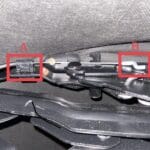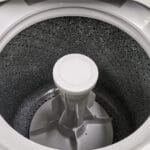You’ve finally settled into your favorite recliner, ready to unwind after a long day, only to discover that the footrest won’t budge. Frustrating, isn’t it?
A broken footrest can turn a once-comfortable chair into a source of stress. But don’t worry—fixing it is easier than you might think. Imagine the satisfaction of sinking back into your recliner, footrest perfectly in place, without having to spend money on repairs or replacements.
We’ll guide you through simple, effective steps to get your recliner’s footrest functioning smoothly again. With just a little effort, you can restore your chair to its former glory and enjoy that much-needed relaxation. Curious to find out how? Keep reading to discover how you can fix your recliner’s footrest quickly and efficiently.
Common Footrest Issues
Recliners are popular for their comfort and relaxation. But, footrest issues can disrupt your peace. Understanding common problems helps in quick fixes. Below, explore typical footrest issues and simple solutions.
Loose Footrest
A loose footrest can make your recliner unstable. It often wobbles and feels insecure. This issue usually arises from loose screws or bolts. Check the joints where the footrest connects. Tighten any loose screws using a screwdriver. If screws are missing, replace them promptly. Regular maintenance prevents further loosening.
Stuck Footrest
A stuck footrest makes reclining difficult. Dust or debris often causes this problem. Inspect the footrest tracks and remove any obstructions. Lubricate the moving parts with a spray oil. This reduces friction and allows smooth movement. Repeat this process monthly to maintain efficiency.
Damaged Mechanism
A damaged mechanism affects footrest functionality. Listen for unusual sounds like grinding or squeaking. These sounds indicate a mechanical issue. Inspect the internal parts for visible damage. You may need professional help for complex repairs. Regular checks can prevent extensive damage.

Credit: www.youtube.com
Tools Needed For Repair
Repairing a recliner’s footrest can seem daunting. But with the right tools, it becomes manageable. Knowing the tools you need is essential. Each tool plays a specific role in the repair process. This guide outlines all the tools you’ll need. From basic hand tools to specialty tools, and even replacement parts.
Basic Hand Tools
Start with basic hand tools. A screwdriver set is crucial. Both flathead and Phillips screwdrivers are often needed. A wrench set will help with bolts and nuts. Pliers are useful for gripping and turning parts. A hammer might be needed for stubborn pieces. Always have these tools on hand.
Specialty Tools
Some repairs need specialty tools. An Allen wrench, for instance. Many recliners use Allen bolts. A power drill may also be required. It speeds up the process. Also, a staple gun can be handy. Especially if upholstery needs fixing. Having these tools can simplify your work.
Replacement Parts
Sometimes you need more than tools. Replacement parts might be essential. Common parts include springs, levers, and brackets. Screws and bolts may also need replacing. Always check the specific parts your recliner needs. Buying the correct replacements ensures a smooth repair.
Steps To Fix A Loose Footrest
Tighten screws to fix a loose recliner footrest. Inspect for worn parts. Lubricate moving joints. Reassemble carefully. Enjoy a steady footrest again.
Have you ever sat down in your favorite recliner only to find the footrest hanging loose? This common issue can be frustrating, but fortunately, you can fix it with a few simple steps. Whether you’re preparing for a cozy movie night or just want to kick back and relax, ensuring your recliner’s footrest is sturdy is essential. Let’s explore the steps to get your recliner back in perfect shape.Inspect The Hinges
Begin by examining the hinges of the footrest. These components are crucial for smooth operation. Look closely for any signs of wear, rust, or damage. Sometimes, all you need is a quick visual check to pinpoint the issue. If you notice any loose or broken parts, you’ll know where to focus your repair efforts.Tightening The Screws
Once you’ve inspected the hinges, it’s time to check the screws. Loose screws are often the culprit behind a wobbly footrest. Grab a screwdriver and tighten each screw. If a screw seems stripped, replace it with a new one. A small effort here can make a big difference in the stability of your footrest.Lubricating The Joints
Finally, consider the joints. Smooth operation often relies on well-lubricated parts. Use a lubricant like WD-40 to treat the joints. Apply it sparingly and wipe away excess to avoid attracting dust. This simple act can extend the life of your recliner, ensuring it moves effortlessly. By following these practical steps, you can restore your recliner’s footrest to its former glory. Have you ever tackled a DIY repair? Share your experiences in the comments below!
Credit: www.gilaniengineering.com.au
Resolving A Stuck Footrest
Fixing a recliner’s footrest involves checking for obstructions or loose parts. Tighten screws and lubricate joints for smooth operation. If needed, replace damaged components to restore functionality.
Is your recliner’s footrest stuck, refusing to budge no matter how hard you try? This common issue can turn your favorite relaxation spot into a source of frustration. Whether you’re missing out on a cozy evening or struggling to find comfort, knowing how to fix a stuck footrest is essential. Let’s dive into some practical solutions that can help get your footrest moving smoothly again.Checking For Obstructions
Start by examining the area around the footrest. Sometimes, a simple blockage can cause it to jam. It could be a remote, a toy, or even a stray sock that’s slipped into the mechanism. Ensure nothing is caught in the hinges or joints. You might be surprised at what you find. A clear path is the first step to solving your problem.Adjusting The Tension
If the footrest feels stiff or unyielding, adjusting the tension may be your answer. Most recliners have a tension knob or bolt underneath. This feature allows you to control how easily the footrest moves. Loosen it slightly if the footrest is too tight. Remember, a small adjustment can make a big difference. Don’t overdo it, or you might end up with a footrest that doesn’t stay up.Releasing The Lock Mechanism
Sometimes, the lock mechanism can get stuck, preventing the footrest from moving. Check to see if the lock is engaged accidentally. If so, gently release it. You might need to apply a bit of force, but be careful not to damage the mechanism. If it’s not releasing, a little lubrication like WD-40 can help. What’s your experience with a stuck footrest? Have you found any unusual items causing the problem, or perhaps discovered a new trick to fix it? Share your thoughts and solutions. Your insights could be just what someone else needs to solve their recliner woes!Repairing A Damaged Mechanism
Repairing a recliner’s footrest can seem daunting, but focusing on fixing a damaged mechanism is your first step to success. The mechanism is the heart of your recliner’s functionality. If it’s not working properly, no amount of external tweaks will make a difference.
Personal experience tells me that patience is key. I recall the first time I tackled a recliner repair. It seemed overwhelming, but breaking it down into smaller tasks made the process manageable. Let’s dive into the steps you can take to fix a damaged mechanism.
Identifying Broken Parts
Your journey begins with a thorough inspection. Look for parts that appear worn or disconnected. Common trouble spots include springs, levers, and cables.
Use a flashlight to get a clear view inside the mechanism. Pay attention to any unusual noises or grinding. These are often indicators of broken parts.
Once, I found a tiny screw lodged in a spring. It was a simple fix that restored full functionality. What small detail might you be overlooking?
Replacing Springs And Cables
Springs and cables are the usual suspects when a recliner footrest refuses to cooperate. Start by purchasing replacement parts that match the original specifications. A mismatch can lead to further issues.
Removing the damaged spring involves carefully unwinding it from its position. Cables can be trickier, as they often require you to disconnect multiple sections. Are you ready to tackle this challenge?
Installing new parts is like putting together a puzzle. Ensure each piece snaps into place securely. A loose connection can undo all your hard work.
Testing The Repair
Once you’ve replaced the broken parts, it’s time to test your handiwork. Gently operate the footrest to see if it moves smoothly. Listen for any unusual sounds.
It’s helpful to have someone sit in the recliner while you observe the mechanism in action. This can highlight any remaining issues that need attention.
I remember feeling a sense of accomplishment when I successfully repaired my recliner. It’s rewarding to solve a problem with your own hands. Are you ready to give it a try?
Preventive Maintenance Tips
Regularly tighten loose screws to keep your recliner’s footrest working smoothly. Lubricate moving parts to prevent stiffness. Inspect for worn-out springs and replace them for optimal performance.
Keeping your recliner’s footrest in top condition requires a bit of proactive care. By focusing on preventive maintenance, you can extend the life of your favorite chair and ensure it provides comfort for years to come. Let’s dive into some simple yet effective tips that can make a big difference.Regular Cleaning
Dust and dirt can be sneaky culprits that harm your recliner’s mechanics. A simple habit of wiping down your recliner with a soft cloth can prevent buildup. Consider using a vacuum with a brush attachment to reach those tricky spots. Spills are inevitable. Address them quickly to prevent stains and damage. Use a gentle cleanser suitable for your recliner’s material. This can save you from bigger hassles down the line.Routine Inspections
Take a moment each month to inspect your recliner’s footrest. Look for loose screws or bolts. Tightening these can prevent bigger mechanical issues. Listen for unusual noises. A squeak or creak might be a sign that something needs attention. Addressing these sounds early can prevent costly repairs.Proper Use Guidelines
Avoid using the footrest as a step stool. This misuse can lead to mechanical failure. Encourage family members to use the recliner properly to maintain its function. Ensure you’re fully seated before extending the footrest. This helps distribute weight evenly, reducing strain on the mechanism. It’s a small adjustment that can have a big impact. Have you ever considered how a little care today can prevent a major repair tomorrow? Think of these maintenance tips as small investments in your comfort. Regular attention to your recliner’s condition ensures it’s always ready to welcome you home.
Credit: www.youtube.com
Frequently Asked Questions
How Do You Fix A Recliner Footrest?
First, check for loose screws. Tighten them. If broken, replace the parts. Test footrest movement.
Why Is My Recliner Footrest Stuck?
A jammed mechanism might cause this. Inspect for debris or broken parts. Clear or replace them.
Can I Replace A Recliner Footrest Myself?
Yes, you can. Use a wrench to remove old parts. Install new ones carefully. Follow instructions.
What Tools Are Needed To Fix A Footrest?
You’ll need a wrench, screwdriver, and replacement parts. Check your recliner’s manual for specific tools.
Is It Expensive To Repair A Recliner Footrest?
Costs vary. Replacement parts are usually affordable. DIY repairs save money. Professional help might cost more.
Conclusion
Fixing a recliner’s footrest can be straightforward. First, gather your tools. Then, identify the problem. It might be a loose bolt. Or a broken lever. Tighten or replace as needed. Regular maintenance helps avoid future issues. Check for wear and tear often.
This ensures smooth operation. Now, you can relax comfortably. Your recliner is ready for use. Enjoy your time off. Remember, small fixes make a big difference. Keep your recliner in good shape. It will last longer. Happy relaxing!




